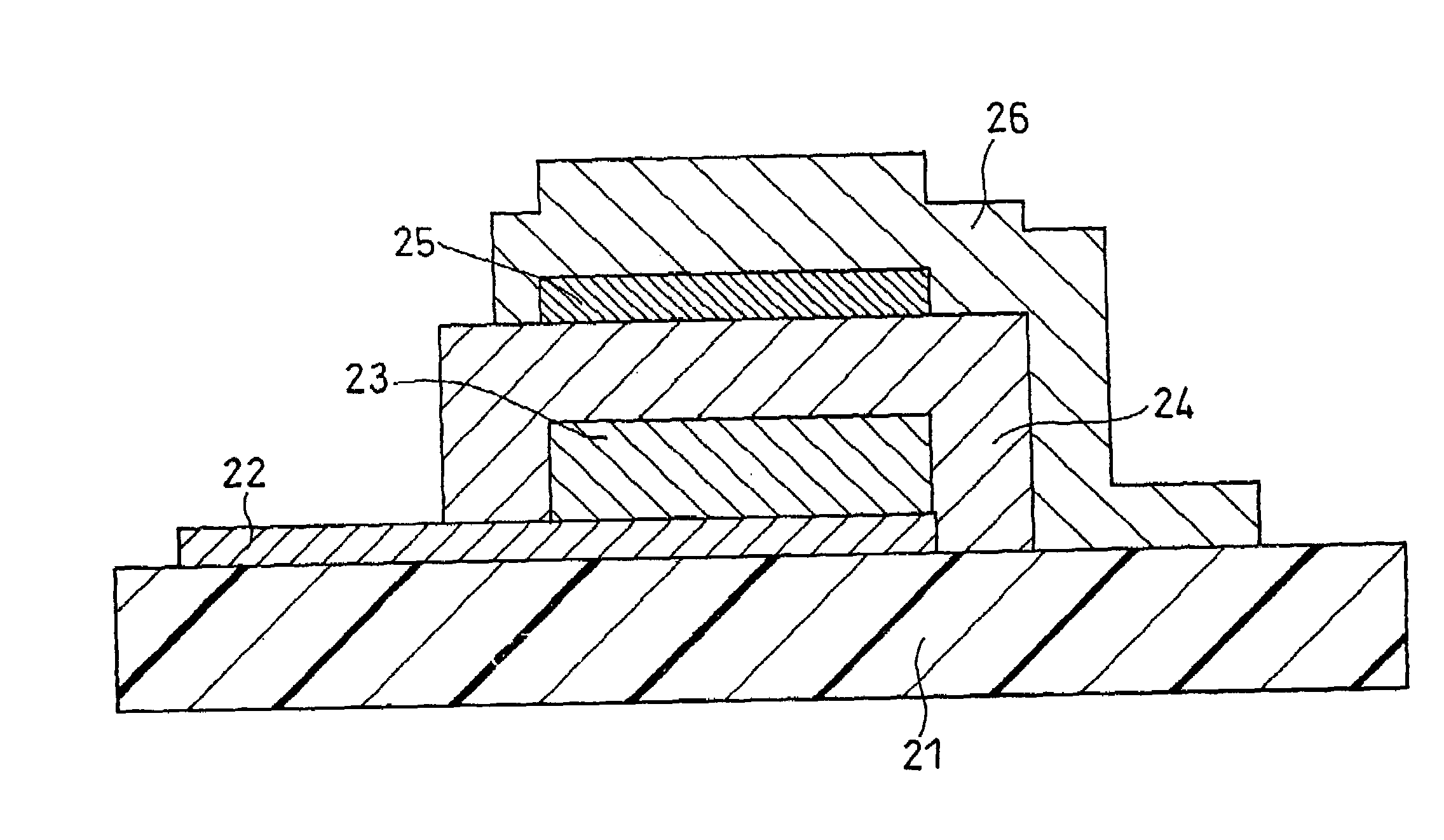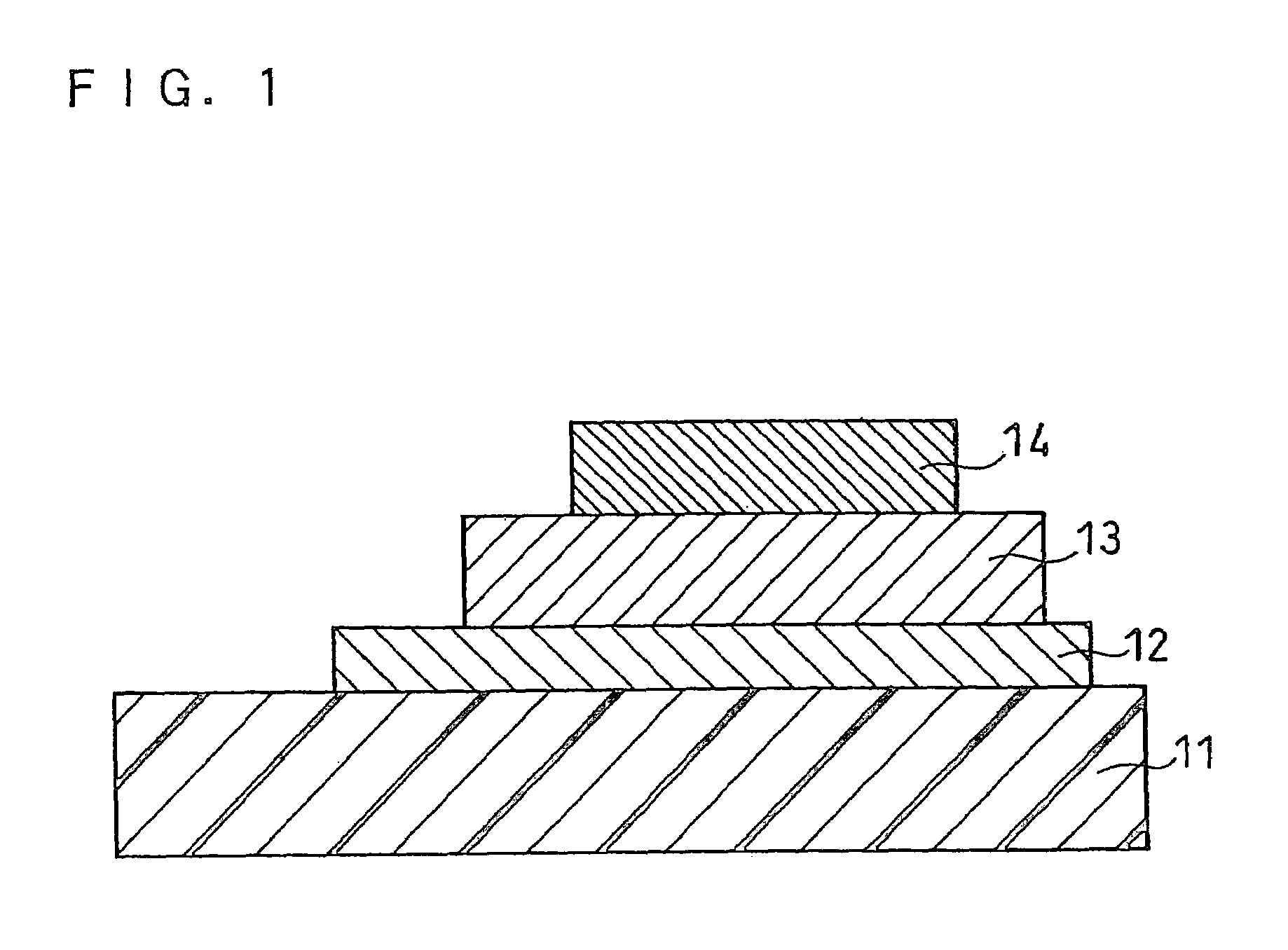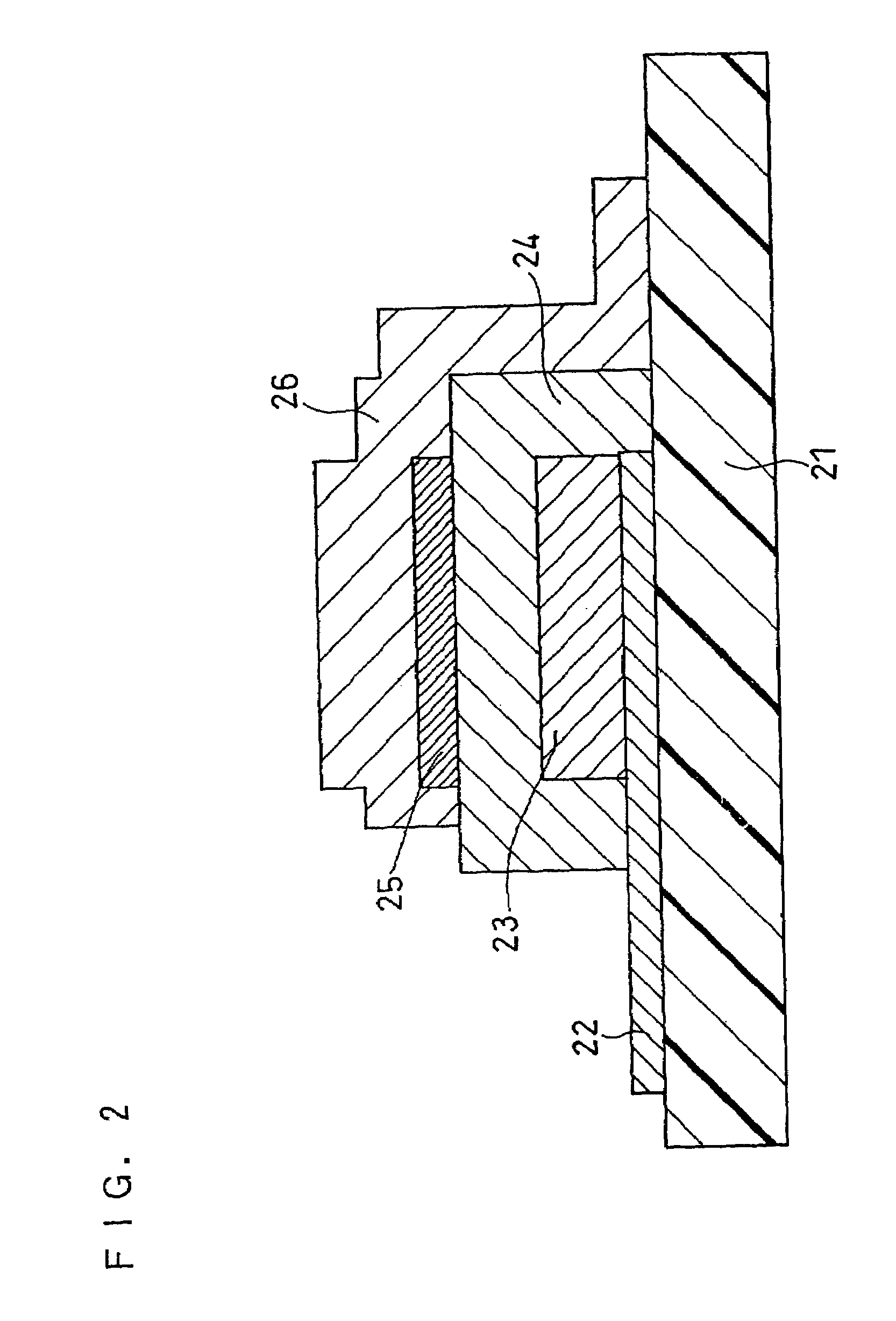Solid electrolyte and all-solid battery using the same
- Summary
- Abstract
- Description
- Claims
- Application Information
AI Technical Summary
Benefits of technology
Problems solved by technology
Method used
Image
Examples
examples 17 – 24
EXAMPLES 17–24
[0055]In these examples, experimental cells were fabricated and evaluated in the same manner as Example 1 except that tungsten (W) was used as the transition metal element and the tungsten content to the phosphorus atoms (P) was varied as shown in Table 2.
[0056]The impedance measurement was also carried out in the same manner as Example 1 except that it was performed only immediately after the fabrication and after 2 week storage. Further, to check their electron conductivities, voltages of +1.0 V from the balanced voltages were applied to the experimental cells immediately after the fabrication and current flowing after an hour was measured. Table 2 shows the electron conductivity rate, i.e., the rate of the electron conductivity with respect to the ion conductivity.
[0057]
TABLE 2Ion conductivityW content toImmediatelyElectronphosphorusafter the2 weekconductivityatoms (atom %)fabricationafterRateEx. 170.5100.0031.956.14E−07Ex. 181100.0072.906.07E−07Ex. 195100.0077.316....
example 25
[0060]In this example, an experimental cell was fabricated and evaluated in the same manner as Example 1 except that zirconium (Zr) was used as the transition metal element. Table 3 shows the results.
[0061]
TABLE 3Ion conductivityImmediatelyTransitionafter the1 day2 day1 week2 weekmetal elementfabricationafterafterafterafterEx. 25Zirconium (Zr)100.0086.2480.2577.0776.62
[0062]According to the results shown in Table 3, significant change in ion conductivity with storage was not observed in the solid electrolyte of the present invention comprising lithium phosphorus oxynitride containing zirconium as the transition metal element.
[0063]Thus, it is found advantageous to use the solid electrolyte of the present invention comprising lithium phosphorus oxynitride containing zirconium.
examples 27 – 44
EXAMPLES 27–44
[0077]In these examples, experimental cells were fabricated and evaluated in the same manner as Example 1 except that the transition metal elements used were molybdenum (Mo), titanium (Ti) and zirconium (Zr), respectively, and their contents to the phosphorus atoms (P) were varied as shown in Tables 5 to 7.
[0078]The impedance measurement was also carried out in the same manner as Example 1 except that it was performed only immediately after the fabrication and after 2 week storage. Further, to check their electron conductivities, voltages of +1.0 V from the balanced voltages were applied to the experimental cells immediately after the fabrication and current flowing after an hour was measured. Tables 5 to 7 show the electron conductivity rate, i.e., the rate of the electron conductivity with respect to the ion conductivity.
[0079]
TABLE 5Ion conductivityMo content toImmediatelyElectronphosphorusafter the2 weekconductivityatoms (atom %)fabricationafterRateEx. 270.5100.003...
PUM
| Property | Measurement | Unit |
|---|---|---|
| Fraction | aaaaa | aaaaa |
| Fraction | aaaaa | aaaaa |
| Fraction | aaaaa | aaaaa |
Abstract
Description
Claims
Application Information
 Login to View More
Login to View More - R&D
- Intellectual Property
- Life Sciences
- Materials
- Tech Scout
- Unparalleled Data Quality
- Higher Quality Content
- 60% Fewer Hallucinations
Browse by: Latest US Patents, China's latest patents, Technical Efficacy Thesaurus, Application Domain, Technology Topic, Popular Technical Reports.
© 2025 PatSnap. All rights reserved.Legal|Privacy policy|Modern Slavery Act Transparency Statement|Sitemap|About US| Contact US: help@patsnap.com



